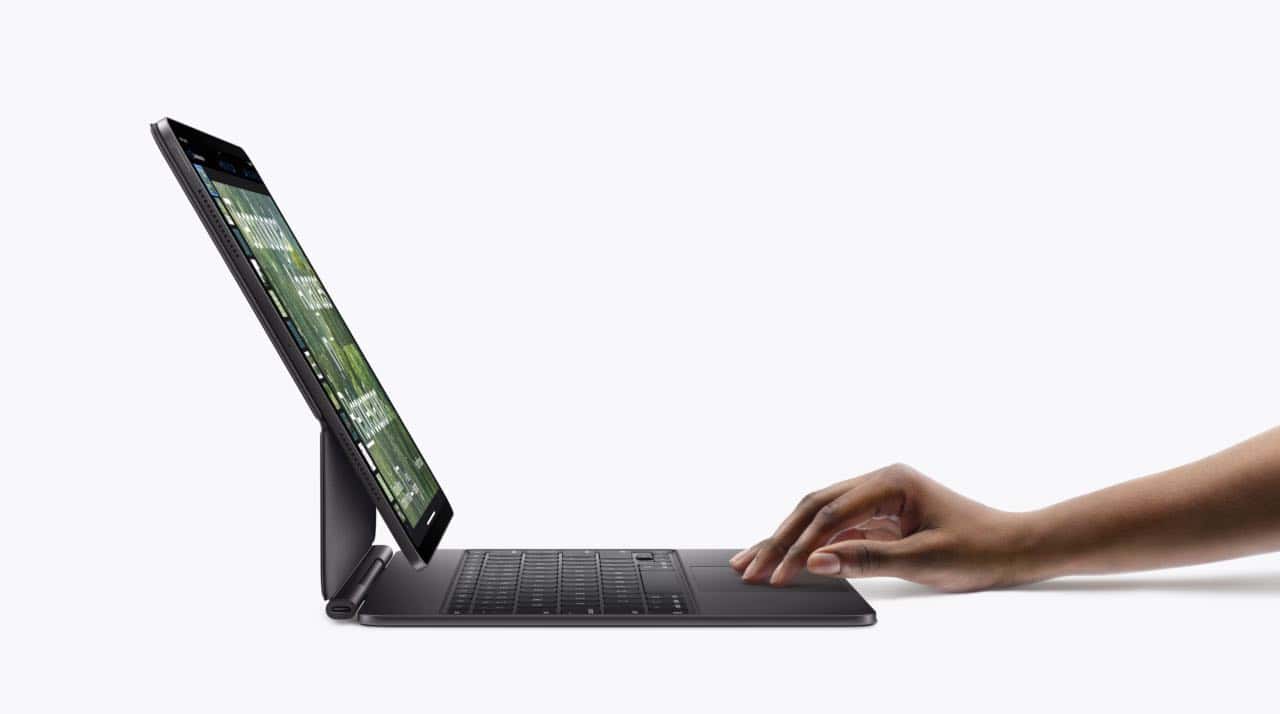Tech
Will the iPad Pro humble the Mac Pro?

Above: Apple’s new iPad Pro. What kind of computing experience is the company really selling here? Images courtesy Apple.
BitDepth#1458 for May 13, 2024
On Tuesday, Apple announced long overdue updates to its iPad line of tablet computers.
There were no iPad hardware updates for almost two years, so an event to build interest in the tablet computers offering some useful changes was the least the company could offer.
Instead, Apple decided to be extra.
After lukewarm announcements of improvements to its iPad Air computers (M2 chip, larger screen on premium model) the new iPad Pro was announced.
Now the iPad Pro is a curious beast. It was the first iPad to get an M-series chip, a larger screen and support for the Apple Pencil, but it never seemed to be successfully positioned to become the laptop replacement that it aspired to be.
Perhaps Apple wanted to safeguard sales of its MacBook Air computers. Maybe the company was still reflexively defending Steve Jobs’ assertion that people didn’t really want or need a touch-screen computer.
Whatever the reasons for its previous hesitation, the company decided to sweep every preconception off the table last week with the new iPad Pro, which ships with an M4 series chip.
For anyone who hasn’t been following Apple chip design process since it introduced Apple Silicon, its own line of system-on-a-chip processors for its devices, here’s the short version.
Apple began replacing Intel as its CPU supplier in June 2020 by ramping up its A series ARM chip designs for iPhones and iPads to a new M series for its newest line of computers.
The first chip, the M1 series, integrated CPU, GPU, Neural and other processors into an integrated design with excellent performance that proved successful on introduction.
A Max version, which increased the number of cores on the chip’s CPU and GPU followed, and an overkill version was achieved by doubling two M1 Max chips to create the M1 Ultra.
Since then, the company has introduced the M2 and seemed to be in the middle of rolling out its newest M3 chip series when the iPad Pro showed up with an unexpected new processor.
Apple claims that its ambitions for the iPad Pro as a professional tool demanded the raw horsepower of the M4 chip. The company claims performance gains on the order of ten times that of the original M1 in the first iPad Pro.
With a new keyboard for the new iPad Pro, relocating the front-facing camera to the long edge of the device and it begins to look a lot like the touchscreen laptop that the company will continue to insist it isn’t making.
As nifty as this new announcement is for creators who want a mobile workstation, it puts Apple’s computers in a curious place.
Particularly the Mac Pro, long held to be the premium high performance computer system for high-end creatives.
A premium configuration of the M4 iPad Pro, which is clearly being positioned as a laptop replacement, costs US$2,700. A basic configuration of the current M2 based Mac Pro (64/1TB) runs upwards of US$8,000 and for that price, you’re buying a stylish and hefty metal box that’s mostly full of air.
There’s little you can do to improve a current model Mac Pro after purchase except to adding special purpose PCI cards. You must specify boot drive size, RAM, CPU and GPU at point of purchase and live with it forever.
Apple’s previous, hefty aluminium models, the so-called cheese graters, set a standard for upgradeable, capable Macs. You could change the RAM, drives, video card and with only a little more daring, the processor itself.
For that reason, they have remained in service with a dedicated core of users providing hacks to keep them going. Most are productively used until they can’t be repaired anymore.
After two of the systems collapsed under me, I finally decided to replace the tower Mac Pro configuration with an iMac Pro, but there isn’t a day that I don’t feel the performance difference, even though the specifications of my last tower were identical to those of the iMac.
Apple is paying lip service to self-repair, so serious users with no appetite for considerable hardware hacking have two choices. Buy the machine they can afford or buy the machine they need, overpaying in advance for a longer usable life as updates and new features steadily rob their system of performance.
Apple’s new iPad Pro might be a tablet, but it’s being positioned as a computer replacement.
With the new M4 addition to the iPad Pro, it isn’t clear what Apple’s next move is likely to be in its undeclared chip development roadmap.
Any new devices will have to ship with M4 chipsets, and that turns the M3 into a lame duck upgrade.
If the next Mac models ship with M4s, the next logical upgrade for power users will be the Mac Studio, which is the size of two stacked Mac Minis (roughly the size of a Ferrero Rocher box) but keeps pace with the performance of the current Mac Pro at almost half the price.
M4 in MacBooks is pretty much a foregone conclusion. We’ll see how Apple rationalises this new chip deployment across the rest of its computing line.































